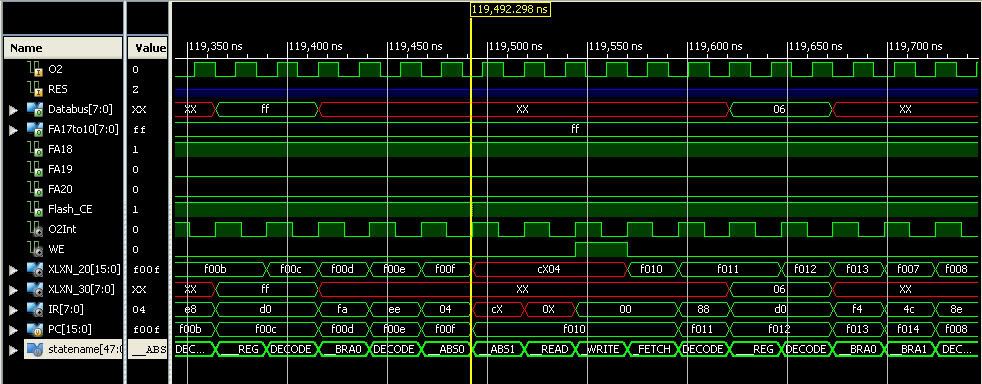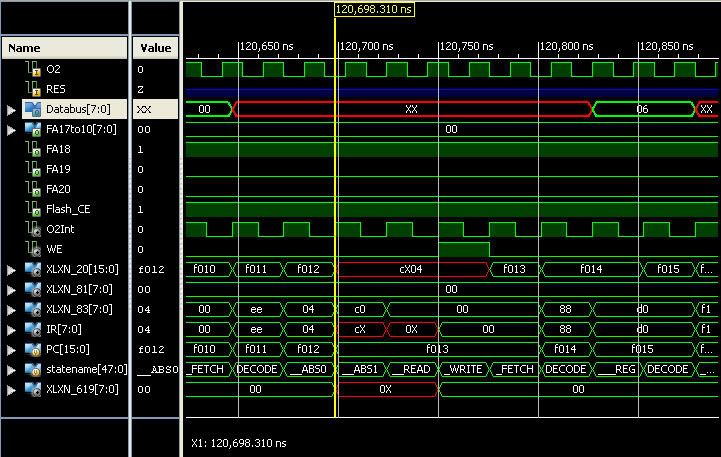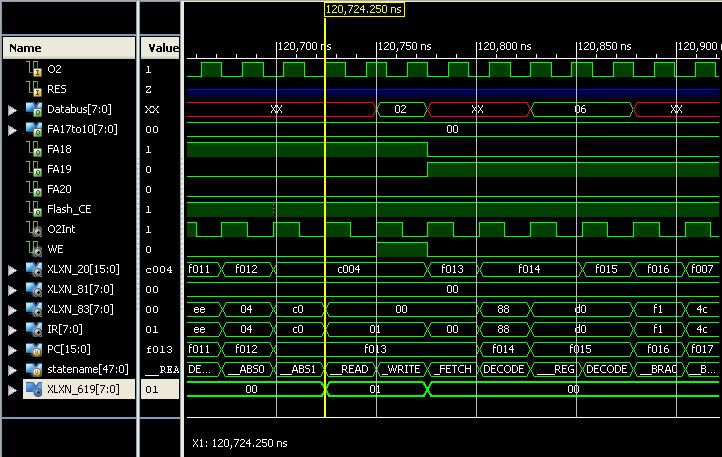Oh nice! Here (below) is where the problem is occurring. During the second INC $C004, FA18 should go low, and FA19 should go high. It looks like the address isn't decoding properly? Sorta doesn't make sense because it works the first time. Let me explain my signals.
O2 is before the DCM. Constrained at 20.58ns.
O2Int is after the DCM. For simulation purposes, I kept it at a 4:5 ratio, i.e. 38.8MHz. It is present to the CPU, internal synchronous RAM, and internal synchronous ROM.
WE is from the 6502 core.
XLXN_20[15:0] is the address bus Net present to everything internally.
XLXN_30[7:0] is the DataOut from the 6502 core. It goes to the internal RAM, ROM, the FA17to10 FD8CE, the FA25to18 FD8CE (lower 3 bits used). and then finally out to the world through an OBUF8. After which it becomes Databus[7:0].
I initially posted today because I was worried I may have hit that instance (or something similar) in which I would have to use a DDR flip flop as mentioned on your homepage Arlet. But I see now, that is only write/write situation, not applicable here.
Anyway, thanks for helping me along!
In due time I will figure it out.


